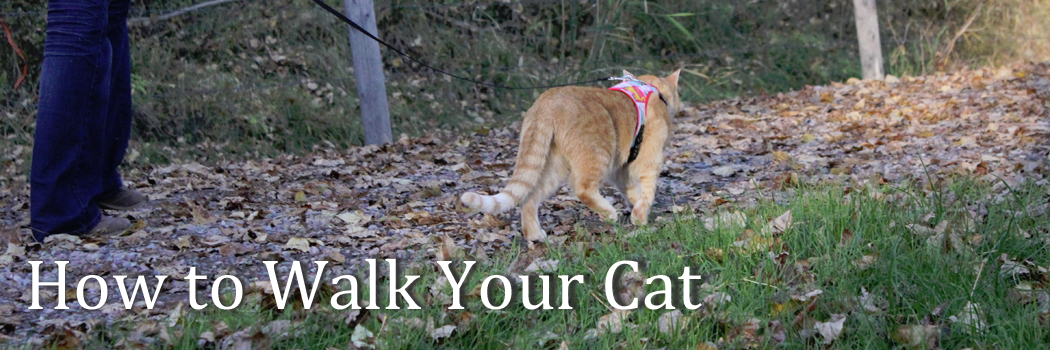
It seems that everyone is walking their cats now. You’ve seen your neighbor do it, the lady at the park did it, and you want to do it, too. Great! You’re in the perfect place for getting started.
Training your cat to walk on leash can be broken down into just three easy steps. With a little bit of time, patience, and of course, a cat, soon you’ll be walking all over with the coolest cat in town.
1. You need to get the equipment. Cats are notorious for their ability to escape tight situations, which is great if they are in danger, but not so great when you’re taking them for a walk. Don’t try walking your cat with a collar. Collars are easy to slip out of and put potentially harmful pressure on your cat’s neck. To walk a cat, you need a comfortable and secure harness that takes the pressure off of your cat’s throat area. Unfortunately, it’s hard to find a harness that cats can’t escape. The harnesses that you can find at big box stores are a breeze for most cats to get out of. They just aren’t designed well for cats! We made a harness that is safe and secure for cats, ergonomically designed for the feline physique.
You will also need a leash. You don’t need a fancy or expensive leash. The ones that you can find at the local grocery store are just fine. When purchasing a leash, choose one that is lightweight (1/2 inch nylon leashes are good), and fairly short, around 5 feet long. You don’t want a leash that is so long that your cat can run into traffic, etc. After you’ve been walking your cat for a while, you can invest in a leash that further fits your needs.
2. Put the harness on your cat. Place the open harness over your cat’s back. Wrap the neck straps around your cat’s neck, and fasten the hook and loop closures. Adjust the harness’s tightness so that two fingers fit snugly between the harness and your cat. Repeat with the girth straps. Do not leave your cat in the harness unsupervised. You wouldn’t want him to get tangled up on something.
Attach the leash to the D ring and take hold of the end of the leash. Once you are holding the leash, follow your cat around, and give gentle tugs once in a while to let your cat know that you are on the other end of the leash. Do not try to drag your cat around if they aren’t going where you would like them to. Instead, encourage your cat to walk by rewarding them with treats, praise, etc. when they walk in the direction you are trying to lead them. Once your cat is comfortable with walking indoors, it’s time to…
3. Take your cat outside, and start walking! Use treats to encourage your cat to walk by your side. Keep up a routine, and increase the time you are outside each day. Once your cat gains confidence, you can expand your boundaries and start taking “real” walks. Each new experience (meeting dogs or people, hearing loud noises) will take adjustment, but if you stick with it, soon you’ll be able to explore the whole world with Kitty at your side.
